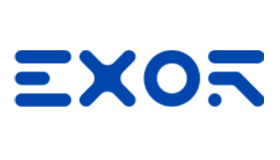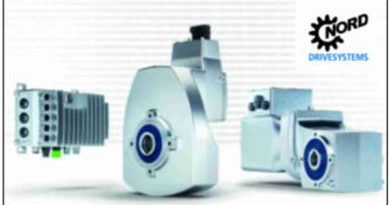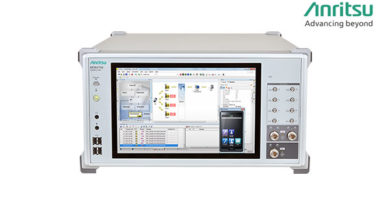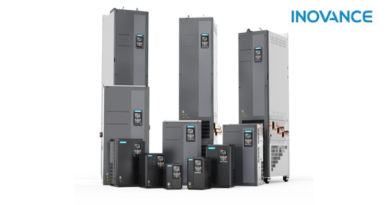Why OPC UA Will Continue to Define the Future of Industrie 4.0
 Industrie 4.0 is here to stay. Its future will continually be defined by the ability to integrate more equipment and
Industrie 4.0 is here to stay. Its future will continually be defined by the ability to integrate more equipment and plant-floor assets into connected networks. The need for a unified architecture has become the domain of the OPC. Since its inception, the OPC Foundation has espoused unifying standards such as OPC UA pub/sub over TSN and the rollout of global standards by the end of 2020. The event is expected to drive the implementation of Industrie 4.0 concepts across the world.
plant-floor assets into connected networks. The need for a unified architecture has become the domain of the OPC. Since its inception, the OPC Foundation has espoused unifying standards such as OPC UA pub/sub over TSN and the rollout of global standards by the end of 2020. The event is expected to drive the implementation of Industrie 4.0 concepts across the world.
Why OPC UA pub/sub over TSN?
The first hurdle to achieving an interconnected and automated industrial system was unifying equipment with diverse communication protocols on the shop floor. For pieces of equipment to communicate effectively, they must be capable of understanding one another. OPC Unified Architecture standards provided the framework for unifying the diverse proprietary equipment on today’s shop floor.
The success of OPC UA meant the focus was placed on the second major challenge of implementing Industrie 4.0 concepts: ensuring multiple types of equipment could communicate within a network and in real-time. To eliminate the challenges of many-to-many communication, the OPC Foundation developed OPC UA pub/sub which leveraged the publish/subscribe technique to ensure multiple assets could access shared information from a centralized system such as the cloud.
The OPC UA pub/sub over time-sensitive network extension brought time-deterministic connectivity to the table. While OPC UA pub/sub makes machine-to-machine and machines-to-cloud communication possible, OPC UA pub/sub over TSN includes field-level communications that make it possible for sensors, IoT devices, and edge devices to be integrated into connected networks in near real-time.
The addition of new unification and communications standards by the OPC Foundation has seen it successfully lead the development of standards that support the full range of industrial automation. With OPC UA pub/sub over TSN, industrial facilities get the interoperability, from field-level up to the cloud, needed to implement the most complex Industrie 4.0 initiatives.
Why OPC UA pub/sub over TSN will define the future of Industrie 4.0
The synchronization of communication protocols, real-time data transfer, and deterministic connectivity that OPC UA pub/sub over TSN offers provide a level playing field for diverse enterprises to explore. The first gainers of this unified architecture and communication process are in the industrial sector which intends to implement automated processes in traditional facilities.
The next groups that will benefit from a unified architecture are the software and hardware vendors who have produced the apps and solutions the industrial sector has run on for decades. With a unified system in place, vendors that traditionally service the industrial sector can build or develop more IoT hardware, rules engines, and software to support the capture, processing, and analysis of plant-floor data. No longer would developers have to create diverse apps for diverse equipment, because unification ensures an app can adapt across diverse proprietary platforms with little or no additional configuration.
The increased use of web-based HMIs or web-based panels alongside the unified architecture and deterministic communication that OPC UA pub/sub over TSN enables provide the third group with the entry point they have always been seeking in the industrial sector. Unification means mainstream developers and vendors can now explore opportunities within the industry.
These developers will bring their experience from the development of mobile and web-based app, to create applications for Industrie 4.0 use cases such as in edge computing or IoT implementations. The extensive design, animation, and computing features web-based HMIs provide will also serve as a platform for developing agile, cloud-backed apps for the industrial sector. Ultimately, these intuitive applications will enhance the implementation of remote monitoring or access to factory-floor assets due to the development of mobile apps for industrial use.
A unified architecture also provides support for increased security features or integrations within Industrie 4.0 applications. With OPC UA pub/sub over TSN, security teams can leverage the power of security information and event management tools to secure expansive IoT networks or Industrie 4.0 implementations.
Conclusion
The future of Industrie 4.0 is closely intertwined with the growth of OPC Foundation standards which create pathways for communication, connectivity, and innovation. The success of its standards has led to partnerships with mainstream tech firms such as Google Cloud, which heralds the global recognition of its initiatives and the important role the tech industry will play in achieving Industrie 4.0.



